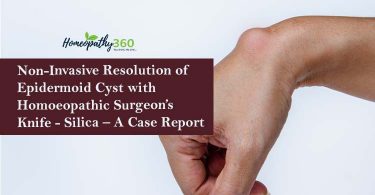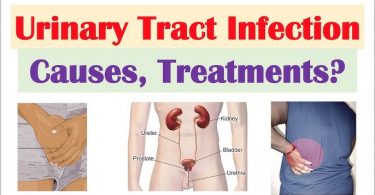Abstract: Understanding of Homeostasis (health & illness), effect of stress on (homeostasis) body & body’s response, signals given by the body in response to stress and physiological phenomenon to overcome the stress & its limitations is treatable with homeopathy.
Introduction
Stress is the most prevalent cause of many diseases in today’s world. With the competing world &its demanding standards, the society that we all live in today, with urbanization at its fastest phase, man is constantly on the drive to do better and better and in the course he gets affected by ‘stress’.
This article discusses ‘stress’, its effect & how to overcome the stress. It is very important to understand the signs of stress while case taking. Homeostasis is natural phenomenon to keep man healthy, derangement in homeostasis is sickness. Stress has an ability to derange homeostasis, so, while treating the patient we must take care of ‘stresses’.
Hahnemann explains, in his Organon of medicine:
Physician is preserver of health, (aph.4), he must know—
a) What is health?
b) The things that derange the health, (aph.5&7)
c) The causes of disease (exciting & maintaining cause + miasmatic or
fundamental cause, aph.5&7)
d) How to remove them?
Homeostasis:
Life is dynamic process. Trillions of cells constitute the body. The cells are
wonderful machines but have exacting requirements for optimum function. The requirements are right composition of fluid, appropriate PH & temperature. Through the co-operative & coordinated activity of all parts of the body (different systems) the condition under which cell function are maintained at a reasonable constant level. This constancy is known as homeostasis.
Stress:
Stress is big problem in our society (Allen, 1983) some 75% of bodily disease is said to be stress related for ex. stress is often a factor in heart disease & cancer, two of leading cause of death.
According to Stedman’s medical dictionary, Stress– Reactions of the body to forces of a deleterious nature, infections & various abnormal states that disturb its normal physiologic equilibrium (homeostasis).
Morgan, King, & Schopler in their book on “Introduction to psychology”, has
defined- stress as an internal state which can be caused by physical demands on the body (disease conditions, exercise ,extremes of temperature& the like) or by environmental & social situations which are evaluated as potentially harmful, uncontrollable or exceeding our resources for coping. The model of “stress” which evokes secretions of both steroid hormones & catecholamine’s may have evolved as response to the primitive signal of substrate lack.(Baxter & Rosseau 1979)i.e. threat to life from environment (external or internal) When food & water intake are not possible, cortisol stimulate gluconeogenesis to maintain blood glucose for nervous system use, aldosterone stimulate sodium retention to maintain intravascular volume & cellular hydration & epinephrine (via sympathetic) stimulate both mobilization of energy –providing substances & cardiovascular & neuromuscular adaptation. Such adaptive hormones have evolved as major regulators of homeostasis & control number of metabolic processes in wide variety of cell type.
Stressors:
The physical environmental & social causes of stress state are termed as
‘stressors’. Once induced by stressors the internal stress state can then lead to various responses. On the one hand, it can result in a number of physical, bodily responses. On the other hand, psychological responses such as anxiety, hopelessness, depression, irritability &a general feeling of not being able to cope with the world can result from the stress state.
Little stress is useful in helping adopt. But beyond some point ‘stress’ becomes ‘distress’.
Change in one’s life are important stressors.(T.H.Holmes1954).
Many ongoing situations include physical stressors such as injury, infection,
exercise, noise, & climate. In addition, the hassles of everyday life centering on work, family, social activities, health, & finances are important stressors which have been found to be related to bodily illness. (DeLongis et al 1982). Frustration & the conflict which cause frustration are also major stressors. Stress has a number of immediate effects & if stressors are maintained, long term behavioral, physiological, emotional & cognitive (thinking) effects occur. Illness (disease, derangement in homeostasis)
The nature of life processes & the hostile forces in our environment pose a
continual threat to homeostasis. But the body is equipped to detect the challenges & to mount an appropriate response which would neutralize the challenge. Health depends on the success of these responses. But when responses are inadequate in relation to the challenge, a person falls ill.
Recovery: (cure)
But even in illness, recovery from the illness depends on the same type responses which operate in good health. The fact had been recognized by Hippocrates as long as 400BC when he stated that the body possesses the means for its recovery from illness.
Common warning signs of stress:
Physical signs:
Dizziness, general aches, pain &grinding teeth, clenched jaw headache,
indigestion, difficulty sleeping, racing heart, stooped posture, sweaty palms,tiredness. Exhaustion, trembling, weight gain or loss.
Mental signs:
Constant worry, difficulty making decisions, forgetfulness, inability to concentrate lack of creativity loss of sense of humor.
Emotional signs:
Anger, anxiety, crying , depression, frequent mood swings, irritability, negative thinking, sadness.
Behavioral signs:
Bossiness, explosive actions, critical attitude to others, increased use of alcohol, withdrawal from relationships.
Tips for coping with stress:
Eat & drink sensibly.
Abusing alcohol & food may seem to reduce stress but it actually adds to it.
Assert you self.
You do not have to meet other’s expectations or demands.
Stop smoking, Nicotine acts as stimulant & brings on more stress symptoms.
Exercise regularly
Relax every day.
Transcendental meditation.( much research is done at, Mind/Body Medical
Institute at Harvard Medical School)
Listen to relaxing (mood lifting) music.
Take responsibility.
Go towards nature (for ex. walking in greenery).
Have social relations.
Keep at least one hobby.
Examine your values & live by them.
Get enough rest.
A positive attitude & self esteem are good defense against stress because they help
you view stress as a challenge rather than problem.
To maintain a positive attitude during stressful situation:
–Stay calm,
–Always tell yourself you can get through the situation,
–Try to be objective, realistic & flexible.
–Think about possible solutions. Choose one that is acceptable& flexible.
–Get enough sleep.
–Think about outcome.
–Ask yourself, what the worst possible thing that can happen?
While treating the pt. the above understanding is must for physician. If he
understands the stessor, councelling to overcome the stress can be done.
Teaching people (pt’s) adaptive ways of handling stressor as to promote the wellness cycle is an important part of newly emerging field of behavioral medicine.
In order to cope with stress, you need to learn how to relax. Relaxing is learned skill, it takes commitment &practice. There are a number of methods you can use to relax, including: Deep breathing, imagine a spot just below your naval. Breathe into that spot, filling your abdomen with air. Let the air fill you from the abdomen up, then let it out, like deflating balloon. With every long, slow exhalation, you should feel more
relaxed.
Progressive muscle relaxation. Switch your thoughts to yourself and breathing. Take a few deep breaths, exhaling slowly. Mentally scan your body. Notice areas that feel tense or cramped. Quickly loosen up this area. Let go of as much tension as you can. Rotate your head in a smooth, circular motion once or twice. Roll your shoulder forward and backward several times. Let your all muscles completely relax. Recall a pleasant thought for a few seconds. Take another deep breath
slowly. You should feel relax.
Mental imagery relaxation. Mental imagery relaxation is a proven form of
focused relaxation that helps create harmony between mind and body. Guided imagery coaches you creating in calm, peaceful images in your mind- a “Mental escape” identify your self talk, that is, what you are saying to yourself about what is going on with your illness or situation. It is important to identify negative self talk and develop healthy, positive self talk. By making affirmations, you can counter act negative thoughts and imagination.
Counseling of the patient and nutrition, exercise, and stress management is must. It has been observed that most of the cases are psoric & sycotic in nature in earlier phases, so where ever anti miasmatic medicine required, are given as inter current.
Homoeopathic medicine like — Nux.vom, Nat.mur, Ars.alb. Staph, Ign., Aur.met, Secal.cor, Ver.alb, Sepia, Puls, …. & may others show good result. Along with stress management & counseling.
Summary:
From above discussion, we understand that many somatic as well as psychological diseases are because of stress if we recognize the alarming signs, or signs of stress, we can treat, guide & preserve the health of the patient in better way, as per the directions (about maintaining &exciting cause) given by Hahnemann.
References:
1) Organon of medicine, sixth edition, translated by William Boericke.
2) Introduction to Psychology, seventh edition, by Morgan, King, Weisz &
Schopler.
3) Understanding medical physiology third edition by R.L.Bijalani.
4) Best & Taylor’s Physiological basis of medical practice, twelfth edition,
John.B.West, editor.
5) Davidson’s Principles & Practice of Medicine, Twentieth edition, the editors Boon, Clledge, walker, Hunter.
Author: Dr Sharad S. Thorat





